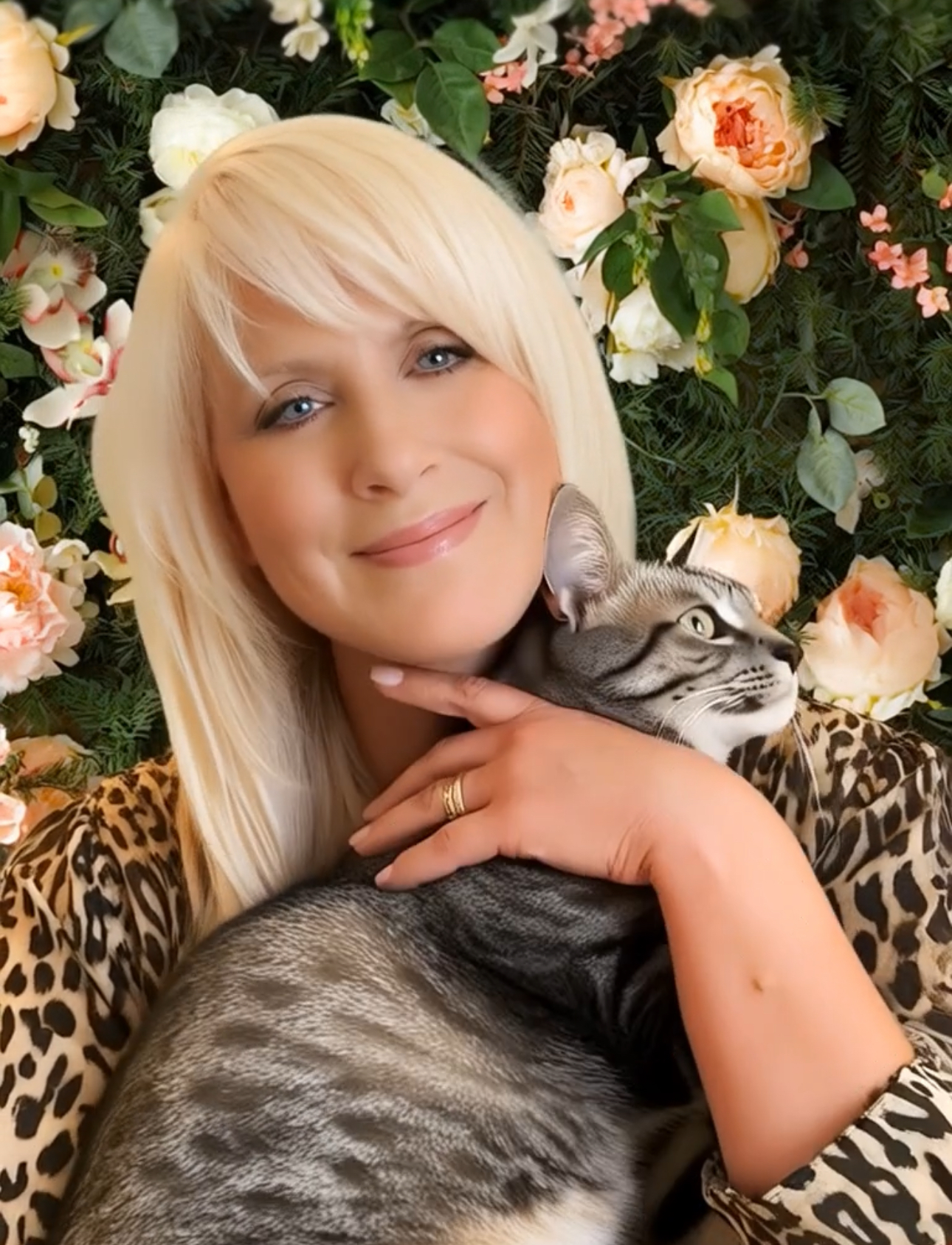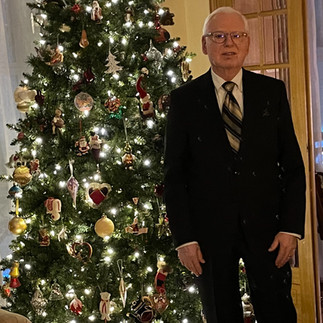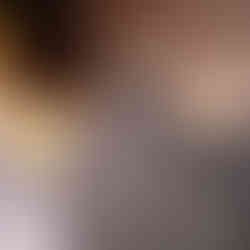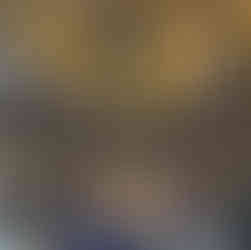At Home and In Paris
- Judith Mitrani
- Jan 23, 2024
- 9 min read
Updated: Feb 9, 2024

It may seem strange that the very same occasions that always drew us toward France on holiday have now become a time for travel away from our home in Paris. You might also ask, why November? The 26th is. Ted’s 75th birthday and the 28th is our 41th wedding anniversary. In between, before, or shortly after these two celebrations had once stood Thanksgiving 🦃 in the US, a holiday we used to love, and one for family, family, family, and more family. This was one of the real losses of moving to Europe, where the last Thursday in the month of November would no longer be a special time to gather together, and certainly was not a holiday in the spirit of “thanksgiving" for the pilgrims' arrival and survival in the early days of colonial America. But since we now live in Paris, it has become something of a ritual for each of us to choose a place to visit outside of Paris for our birthdays.

In the case of Ted's birthday, which is only two days before our wedding anniversary, his choice is a special one. As for Venice, in November, we discovered 13 years earlier that there were relatively few tourists in that city at that time of year. Throughout nearly all other times of the year, Venice would always be crawling with tourists. However, in late November, there are very few visitors with the exception of those concentrated in the immediate vicinity of Piazza San Marco. We also discovered that, although the weather is quite chilly and a bit damp this time of year, there are mostly blue skies decorated with white clouds and little if any rain except overnight. Also, the benefits of 'off-season' include less costly hotels and airfares. This was to be our first air flight

since our return trip from Norway in the summer of 2019, before Covid struck fear in our hearts. For those who have not spent any great length of time in Venice, you are probably not alone. It is said that many people just come to Venice for a day or two, visit the Piazza San Marco with its famous cafés, the Basilica, and the Doges Palace, and then usually return to the mainland for a plane or a train to some other city in Italy. It has occurred to me that people treat Venice as if it were some kind of Disneyland, and in a way, that makes sense. Venice is the only major city that I know of in the world made for pedestrians only. Transportation from and to the airport or train station on the
mainland, or between the 126 islands separated by expanses of open water and by canals, or are often linked together by 472 bridges. Travel throughout Venice is also possible by gondola, water bus, or water taxi. Ted and I were lucky enough to have previously spent a grand total of two months in Venice, at least one or two weeks at a time, so we have really had more than the usual leisure time to appreciate the art displayed in the handful of museums and many dozens of churches in the city. Venice is a thoroughly charming and exceptionally romantic city, and we have always enjoyed getting lost there, which is very easy to do, especially at night. One of my favorite Ian McEwen novels, "The Comfort of Strangers" begins as a love story with a young couple who get lost at night in Venice, and enter a
nightmare experience that is mysterious, unimaginable, and shocking for the reader. For those of you who would rather see the film, I can attest to its superiority over the novel, at least, in my humble opinion (check out this stunning teaser/trailer for yourself by clicking on the link below ).
If the film, with a screenplay by Harold Pinter, Directed by Paul Schrader and starring Christopher Walken, Helen Mirren, Rupert Everett, and the gorgeous Natasha Richardson (several years before her tragic death) interests you it is streaming on TV. But now I have gotten way off of the subject of this post: to share some samples of the beauty and magic of Venice that draw us away from our cozy home in Paris at this special time of the year.
This was a trip out of the ordinary for us, as we had previously stayed mainly at a small but picturesque hotel, The Concordia, where our room overlooked the side entrance to the Basilica San Marco. I loved it because it was old-fashioned in its interior design, the breakfast was good, the service friendly, and it was very inexpensive, considering its location.
The last time we stayed in Venice, we were the guests of a dear friend and colleague, Chiara, who had a beautiful four-story home on one of the smaller canals. It had been completely renovated and modernized, with guest quarters that stood on the fourth floor with an elevator, its own kitchen, a comfortable living room, an enormous king bedroom, and a covered terrace as large as
the entirety of the rest of the apartment, and from which one could see at least nine churches, and hear their bells ringing with simultaneity on the hour and every quarter of an hour thereafter.
This trip, although we would have dinner on our anniversary with our friend and colleague Chiara and her husband Ami (whom we had known before he retired from the wonderful Altenberg Piano Trio from Vienna), we decided to stay at The Monaco Hotel on the Grande
Canal facing the Basilica di Santa Maria della Salute, right next to the famous Harry's bar in the Hotel Cipriani. We had chosen this hotel for both practical and sentimental reasons. This was the hotel which, many many years ago, my mentor, Frances Tustin, had been hosted when she would come to Venice to teach and supervise. Back then it was not nearly as glamorous, but still had a fabulous location.

Special memories of dinner on the terrace facing this beautifully lit and quite spectacular Basilica with the Grand Canal in between was another special souvenir of this hotel. We had also had drinks on the same terrace with our good friends, Olivier and Varenka, recently passed away, but still in our hearts and memories. And during our last visit to Venice, our first night was spent walking from Chiara's home to the Basilica in a driving rain for a special holiday dedicated to the end of the black plague, with a ceremonial lighting of candles outside the basilica to be carried inside in a grand procession that most residents of the city attend in the third week of November. As this was our first time in Venice without concern for watching our budget, we
reserved a splendid suite, with a magnificent view of the Basilica, and the pier below our balcony, which received not only water taxis, was home to several gondolas, and also had a port for the vaporetto, the Italian word for water bus. The Monaco was a short walk along the canal from the
Piazza San Marco, at the heart of Venice. At 180 meters long by 70 meters wide, it is the only square in Venice of this size and beauty. St. Mark's Square is one of the most famous and most photogenic squares in the world and has several buildings facing the square, including the
Basilica of San Marco, the Doge’s Palace, the Correr Museum, the Bell Tower of the Basilica, and the Torre dell'Orologio (Clock tower). On our first visit here, Ted told me the story of the magnificent clock and it's maker, who was rewarded by the Doge for producing one of the most extraordinary features in this Piazza by having his eyes put out so that he would never be able to duplicate it for anyone, anywhere else. At night in the warm seasons, the square is full of life and you can have fun just walking among the famous cafes with live music. In November, the

to several churches that exhibited one or more Titian and Tintoretto paintings. Both Painting in Italy in the 16th Century and considered The Two Old Masters of Venice, the rivalry between Titian and Tintoretto began early in the career of the latter artist. Tintoretto was born in Venice
around the same time, Titian began to cement his reputation in the city-state. By the early 16th century, between 1516 to 1518, Titian emerged as a notable artist with the altarpiece painting in the Basilica of Santa Maria Gloriosa dei Frari in Venice. Although much younger than Titian,
Tintoretto was given the nickname “Il Furioso” for his furious dedication to his art practice. Titian and Tintoretto became rivals, motivating them to outdo one another and reach new heights of artistic achievement. Despite their highly competitive relationship, Titian believed Tintoretto
had cultivated his own style, deeming any tutelage offered by himself as unnecessary. In return, Tintoretto greatly admired both Titian and Michelangelo, whereby he wrote on the wall of his Venetian studio: “il disegno di Michelangelo e il colorito di Tiziano,” which translates to “the design of Michelangelo, the coloring of Titian.” The Academia is an essential visit for painting


enthusiasts; perhaps the most important museum that you can visit during your stay in Venice. The Academy was intended to bring together under one roof all the works of art that were scattered throughout Venice. The collection has increased over time thanks to private donations and acquisitions. Thus, it currently has more than 800 paintings dating from 1200 through the 18th century, an art-lover’s dream come true. Another dream come true for us on this visit to Venice
was attending a performance at La Fenice Opera House. We were able to secure two wonderful
seats for "The Tales of Hoffman" by Jacques Offenbach, a prolific composer of French-German heritage who was best known for this superb opera. A sample of his luxurious melodies can be heard in the Barcarolle played on this YouTube link against the background of the Sparklingly lit banks of the Grand Canal from the POV of sitting in a real gondola :
<iframe width="560" height="315" src=" https://www.youtube.com/embed/OJdwvl2PqBY?si=rS9OWcuDbh7JFlNn" title="YouTube video player" frameborder="0" allow="accelerometer; autoplay; clipboard-write; encrypted-media; gyroscope; picture-in-picture; web-share" allowfullscreen></iframe>
The first time we came to Venice was so many years ago that we couldn’t afford a trip on a gondola let alone opera tickets; the second time no operas were being performed during our stay; the third time the opera house had recently burned down the year before.But this time we were lucky to find tickets for an opera we loved, being presented in the opera house that had done justice to its name, rising from the ashes and as glorious as ever, rebuilt to original specifications. If you are interested in that historic moment in a long string of historic moments in the life of this spectacular city, I highly recommend John Berendt’s book,"The City of Falling Angels”, his first since "Midnight In the Garden of Good and Evil”. In his unique style of story-telling, he introduces the reader to the magic, mystery, and decadence of Venice, gradually revealing the truth behind the sensational 1996 fire that had destroyed the historic La Fenice opera house. Introducing us to a rich cast of characters, Berendt tells a tale full of atmosphere and surprise as the stories build, one after the other, ultimately coming together to portray a world as finely drawn as a still-life painting.
After the performance, which was stunning in every way, we had a late supper at the restaurant directly across from the opera house, Restaurant Antico Martini where the food was wonderful,
the atmosphere nothing less than gorgeous, and it felt like a dream we’d had long ago. We enjoyed people watching and talking about the very first place we had stayed in Venice which was the end of this very same street. The most striking memory was the moment when we are about to leave the hotel to find somewhere to eat on a student budget (fat chance), when all of a sudden a man dressed in a tuxedo flew through the front door, swept up the enormous bouquet of colorful flowers that were plunged into a large vase across from the reception counter, and without a word, he ran back out as quickly as he had burst in. We asked the receptionist what that was all about. He explained that it was simply a custom for someone to confiscate the flowers from the lobby of the Hotel La Fenice just to throw up on stage at the end of the opera. That night we had become lost both before and after dinner, but we found our way and also had a coffee and Tiramisu, just a few months before this rich desert made with mascarpone cheese began to show up on menus everywhere in Los Angeles. This is time walking back to our hotel it was impossible to get lost with the Christmas lights everywhere to guide us.
It had been our last night in Venice and although we hated to say goodbye, we enjoyed the water taxi ride back to the airport and looked forward to arriving back Home and in Paris,
And Especially to Our Little Buddy, Mickey!













































































































































Love your recountings of your travels..so rich engaging and detailed.
nearly as good as being there...